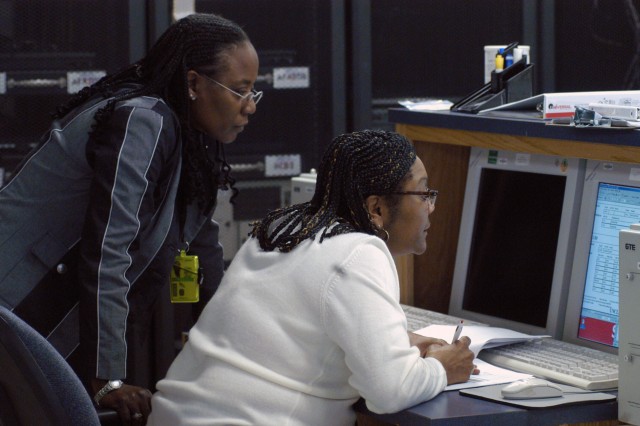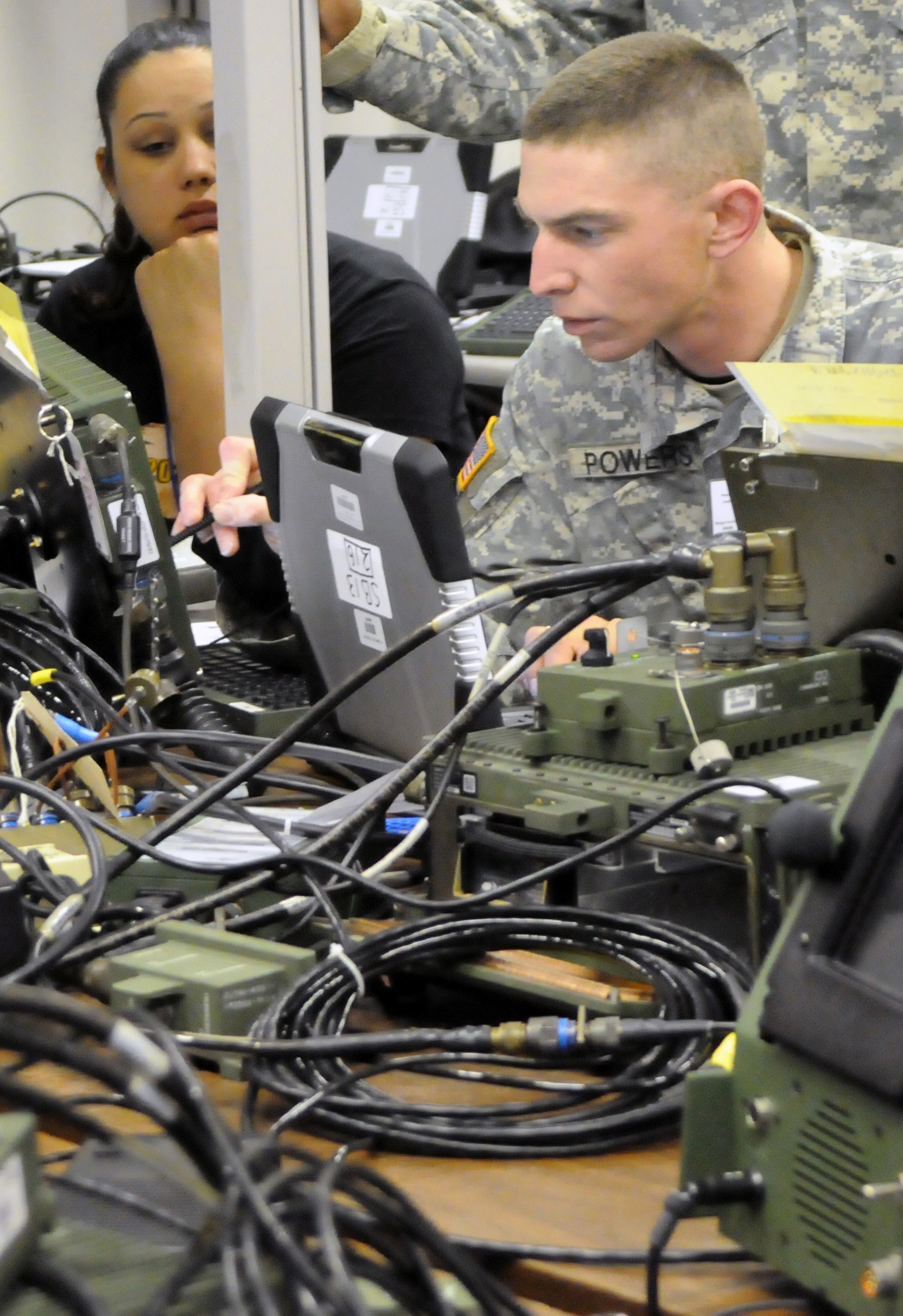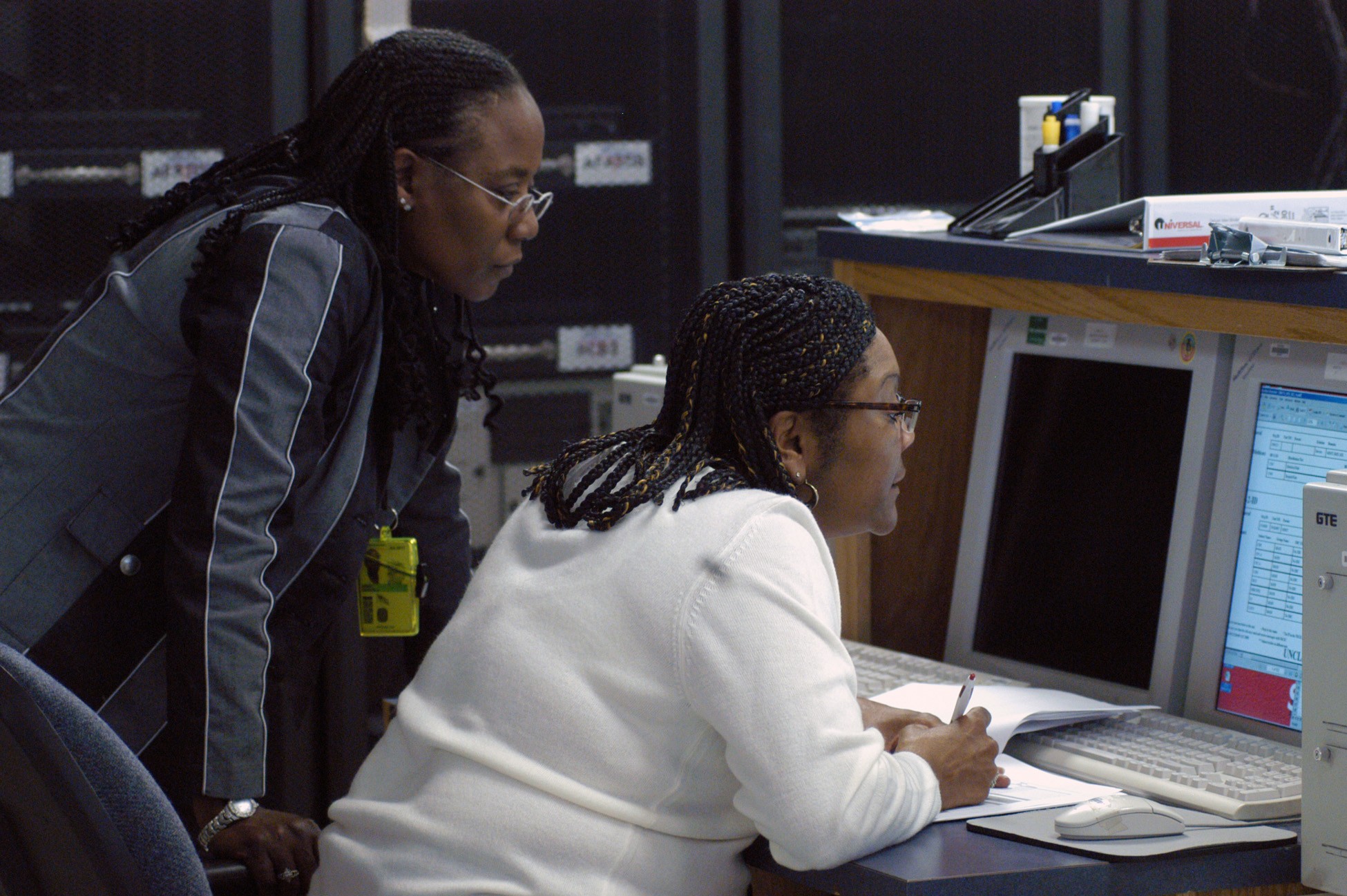Consider the digital battlefield without data products.
Without data products, digital battlefield situational awareness would not be possible.
Without data products, commanders couldn't command. Without data products Soldiers could not communicate with one another. Without data products, most LandWarNet/Battle Command (LWN/BC) software systems just wouldn't function.
According to Larry Dix, assistant production lead for Program Director Tactical Network Initialization (PDTNI) at the Central Technical Support Facility at Fort Hood, TX, data products are the compiled files required for LWN/BC and network system initialization.
They are built, produced, and tested on the CTSF campus.
Dix works on the construction and production end of the data product process.
The occupants of three of the mix of 30 temporary and permanent buildings at CTSF site are dedicated to the construction and production of data products, he indicated with a sweep of an arm.
"In (fiscal) 2009, we put out 157 units," he said. "Last year (fiscal 2010), we put out 176 units."
Dix explained that data products are manufactured for military units - one data product for one unit.
"And the units we work with range from brigade-size elements to battalion-size," he said.
Any one data product, he said, is a complex thing.
"A data product contains all of the data this is required to initialize LandWarNet systems - URNs, fully-qualified domain names, IP addressing...," Dix said. "They are absolutely necessary so systems can send and receive SA (situational awareness) and C2 (command and control) messaging...and give Soldiers the connectivity they need on the battlefield."
Construction of a data product actually begins with the Tactical Networks Architectures and Configuration-Current where the structure of the product is laid out. It then comes to PDTNI personnel on the CTSF campus. There, individual unit data is put together to make up the many files contained in the finished product.
"We build and produce data products to support the upper and lower TI (Tactical Internet)," Dix explained.
The upper TI, he clarified, covers LWN/BC tactical operations centers. The lower includes Force XXI Battle Command Brigade and Below (FBCB2) systems, Joint Capability Releases, and Blue Force Tracking (BFT) systems.
Because the data products are built on the CTSF campus, validation and verification (V and V), and testing is literally just across the street.
"All of our data products go through V and V," Dix said, "and all of our EPLRS (Enhanced Position Report System-based) and go-to-war data products are sent to (the CTSF) Test (Branch)."
The V and V process, conducted by the CTSF system engineers, involves an examination of the multiple elements of a data product to make sure it is consistent with established, required formats. Information Assurance technicians look at the data product's Lightweight Directory Interchange Format (LDIF), L-band exchanges, and its FBCB2 and BFT databases.
The testing of the go-to-war data products is somewhat more involved and more time consuming, because, according to CTSF Test Officer Connie Landmann, testing is rigorous and intensive.
"We're trying to establish as close as we can that all of the network configurations are accurate, so that Soldiers in the field will be able to accurately see SA, and message each other," Landmann said. "The way we look at it, what we do (in test) can prevent fratricide."
Landmann said the data product test protocol involves sending, and checking the receipt of, a variety of messages to demonstrate that systems have been correctly initialized and are connecting properly.
Testing begins when PDTNI completes its work and officially forwards the data product to the CTSF. No time is lost in transport, because the product is literally carried next door where it is received by the Configuration Management (CM) Branch. CM gets the data product to Landmann and her test team - five test operators and a lead operator known as a "pit boss".
"We actually get a data product bundle," Landmann said. Each bundle consists of the LDIF, FBCB2 elements, and L-Band and network configurations. "For EPLRS products, we get an EPLRS Network Manager (ENM) library," she added.
All of the elements of the bundle are loaded into computers in the CTSF data product lab and testing begins.
"We're in a unique situation here," Landmann said. "Because PDTNI is right here, if we come across an error in a go-to-war data product, we can call them, they check it out, and they can replace whatever needs to be fixed."
"They can get it back to us as soon as possible, and we can continue with testing," she added. "So a product never leaves here wrong."
The tested and, if necessary, repaired, data product literally goes out the door to the deploying unit.
"There is no lag time. It goes directly to the unit," Landmann said.
Landmann said the maximum turn-around time, from the time a data product is received, to the time it goes to the Warfighter, is two weeks.
"We frequently work overtime with our go-to-war products, and almost never miss a deadline," she added. "We're extremely conscientious because we know what we approve here does go directly to the Soldier."
Dix agreed that PDTNI's proximity on the CTSF campus to independent information assurance and testing is indeed a benefit both to his organization and to the Warfighter as well.
"Our biggest advantage," he noted, "is that here at the CTSF on Fort Hood, we have access to all of the LandWarNet system program offices, and we can get immediate input and feedback."
And that input and feedback is necessary to continue to build and upgrade what Dix sees as the foundation of digital battlefield communication - data products.




Social Sharing